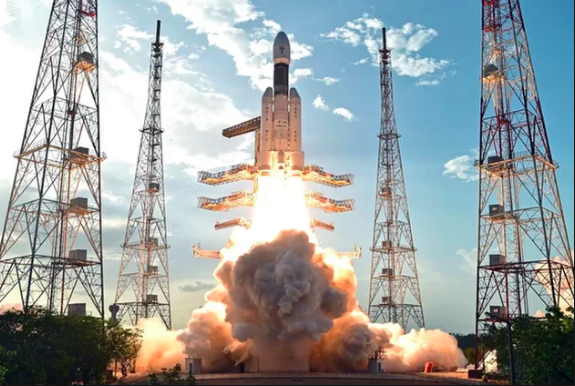The United States of America has NASA. India has ISRO. There’s never an end to the list of achievements bagged by the space research organizations. In the past, for decades together, the Indian Space Research Organization has, by virtue of its feats, catapulted India to the attention of the world.
Now, the ISRO has gathered a feat that will only raise the bar higher. In what is truly a landmark moment for India, the country’s biggest and most powerful satellite- as on date- was launched by the venerable ISRO.
Rightly named ‘The Big Bird’, inarguably the idea being to highlight the scale of the flying satellite, ISRO’s new flight has India believing in a dream it has fostered for a long time- that of having a really powerful sattelite- and the world gushing in admiration.
The satellite the space agency put into its orbit is the heaviest in the checkered history of India thus far, it being a whopping 5854 kg. This is not just any other satellite. This is a GSAT-11, landmark, heavyweight Indian equipment.
Having said all of that, one might wonder as to what may have the cost of launching such a mega satellite turned out to be?
To that end, one cannot be surprised to note that the said costs INR 600 crore. And while the cost of the satellite might seem like a great factor underlining its significance, let it be known that this isn’t the most defining factor of the Big Bird ISRO Satellite.
The Big Bird is, by far, an equivalent to the combined power of all previous communication satellites launched by the world’s largest democracy. That, in itself, explains the massive tide of attention surrounding the Big Bird.
The cost and scale explained, let’s now come to the next most important factor in regards to the Big Bird.
Like every communication satellite has a reason behind its design, inception, and, then, the launch, one may certainly wish to know what might be the reason behind the Big Bird of ISRO?
Popular media outlet, NDTV.com, reporting in detail about the landmark launch, stated the following:
The Ariane-5 heavyweight rocket was hired from Arianespace by ISRO. The satellite is expected to have a lifespan of 15 years.
The satellite internet, which the GSAT-11 will help to provide, will aid in giving internet connectivity in flights in India.
Having said the above, if one were to understand the significance of the Big Bird satellite in celestial terms, it may be useful to remember the words of an ISRO scientist, one of the many responsible for designing the current national news champion:
Apparently, this the satellite is like a constellation of 30 classical orbiting satellites.
If that doesn’t explain the scale of the Big Bird, then one might argue, what might ever? In its bid to take India’s ascendency even higher than what it is at the present in space missions, ISRO has certainly added a new feather to its hat, for the lack of a better word.
NDTV further shared, in its news piece that the country has hired the French Ariane-5 rocket as it can heavy payload into orbit. India’s own geosynchronous satellite launch vehicle MK iii or GSLV MK iii can haul satellites that weigh up to 4 tons.


